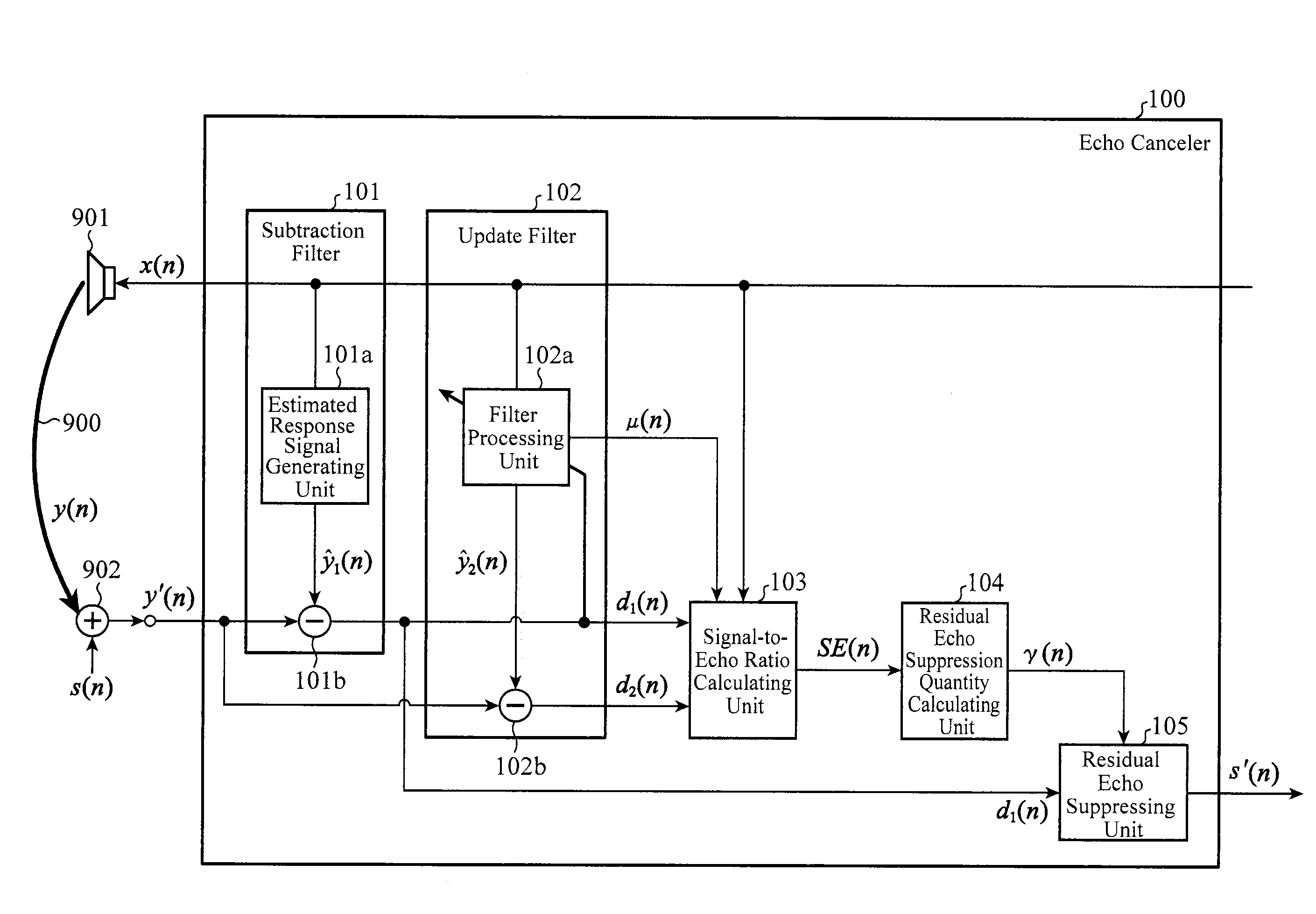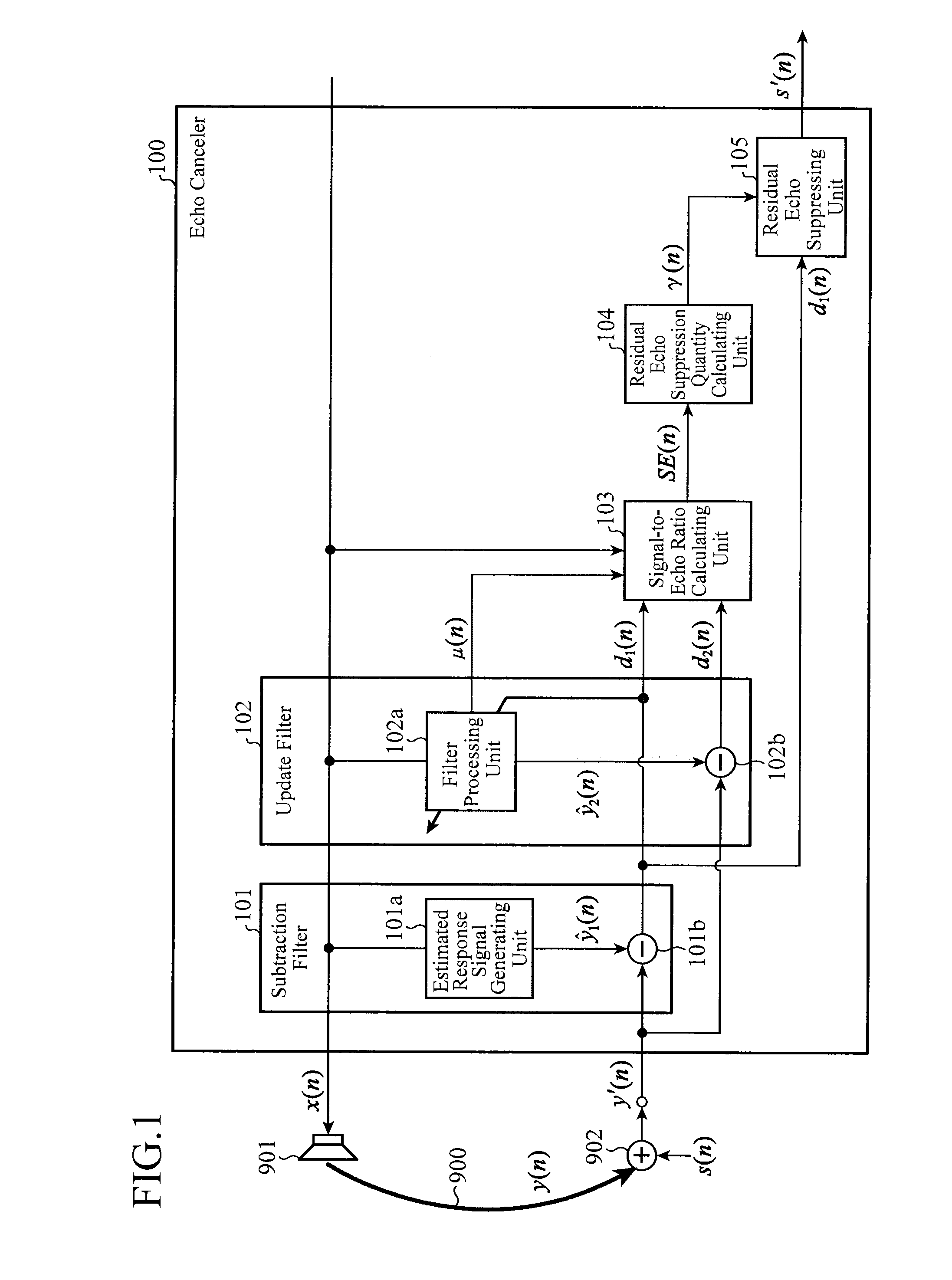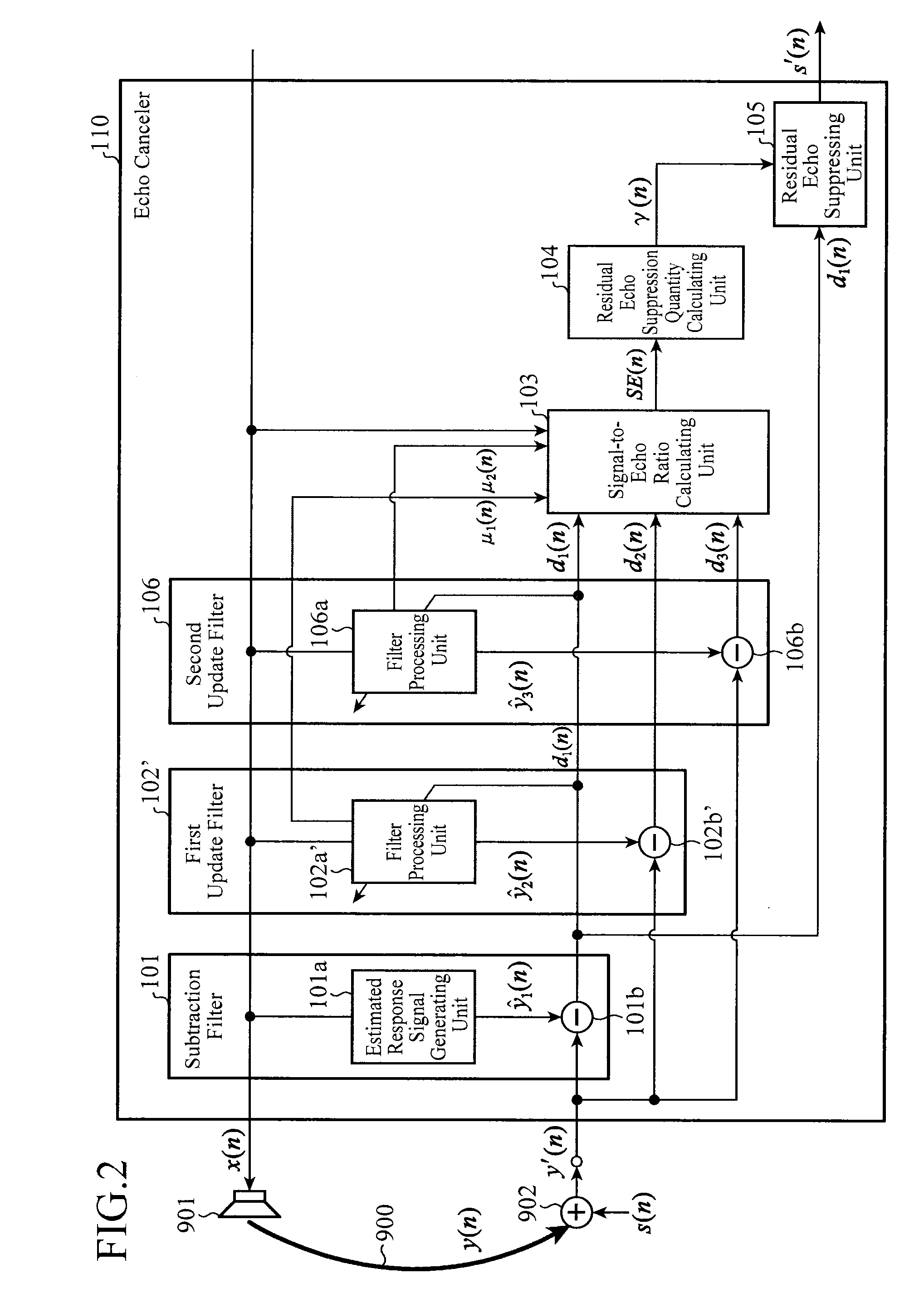Echo canceler and echo detector
a detector and echo technology, applied in the field of techniques, can solve the problems of reducing the estimation accuracy of echo signal power, avoiding conventional methods, and carrying out right observation, and achieve the effect of suppressing residual echo and facilitating telephone conversation
- Summary
- Abstract
- Description
- Claims
- Application Information
AI Technical Summary
Benefits of technology
Problems solved by technology
Method used
Image
Examples
embodiment 1
[0018]FIG. 1 is a block diagram showing a configuration of an echo canceler of an embodiment 1. In FIG. 1, the echo canceler 100 comprises a subtraction filter 101 for generating a first estimated echo signal and a first residual signal; an update filter 102 for carrying out a coefficient update of a filter coefficient sequence and for generating a second estimated echo signal and a second residual signal using the updated filter coefficient sequence; a signal-to-echo ratio calculating unit 103 for computing a signal-to-echo ratio; a residual echo suppression quantity calculating unit 104 for calculating the suppression quantity of a residual echo; and a residual echo suppressing unit 105 for suppressing the residual echo. Furthermore, the subtraction filter 101 comprises an estimated response signal generating unit 101a and a subtractor 101b, and the update filter 102 comprises a filter processing unit 102a and a subtractor 102b.
[0019]In addition, as shown in FIG. 1, the echo canc...
embodiment 2
[0073]An echo detector comprising the subtraction filter 101, update filter 102 and signal-to-echo ratio calculating unit 103 shown in the foregoing embodiment 1 will be described. FIG. 3 is a block diagram showing a configuration of an echo detector of an embodiment 2.
[0074]In FIG. 3, the echo detector 200 comprises an echo detecting unit 201 instead of the residual echo suppression quantity calculating unit 104 and the residual echo suppressing unit 105 of the echo canceler 100 shown in the embodiment 1. Incidentally, in FIG. 3, the same components as those of the echo canceler 100 shown in FIG. 1 of the embodiment 1 are designated by the same reference numerals and their description will be omitted.
[0075]The signal-to-echo ratio calculating unit 103 calculates, according to the foregoing Expression (18), the signal-to-echo ratio SE(n) using the received signal x(n), the first residual signal d1(n) obtained by the subtraction filter 101, the second residual signal d2(n) obtained b...
embodiment 3
[0080]The foregoing embodiment 1 shows a configuration which causes the update filter 102 to update the updated filter coefficient sequence using the received signal x(n) and the microphone input signal y′(n), and to obtain the second residual signal d2(n) soon after that using the same received signal x(n) and microphone input signal y′(n), and which uses them for computing the signal-to-echo ratio SE(n).
[0081]However, although the received signal x(n) and the near-end signal s(n) are uncorrelated in general, correlation sometimes appear between the received signal x(n) and the near-end signal s(n) and hence there are some cases where the update filter coefficient ĥ(n+1) outputs the second estimated echo signal ŷ2(n) that will eliminate part of the near-end signal s(n) in the microphone input signal y′(n) supplied. In this case, there are some cases where the variance σd22(n) of the second residual signal d2(n) is reduced temporarily, which can sometimes hinder accurate calculation...
PUM
 Login to View More
Login to View More Abstract
Description
Claims
Application Information
 Login to View More
Login to View More - R&D
- Intellectual Property
- Life Sciences
- Materials
- Tech Scout
- Unparalleled Data Quality
- Higher Quality Content
- 60% Fewer Hallucinations
Browse by: Latest US Patents, China's latest patents, Technical Efficacy Thesaurus, Application Domain, Technology Topic, Popular Technical Reports.
© 2025 PatSnap. All rights reserved.Legal|Privacy policy|Modern Slavery Act Transparency Statement|Sitemap|About US| Contact US: help@patsnap.com



